
Overview: Tremolo tells a story of a young Chinese violinist who battles with a tremble in her right hand that resurfaces during her first week as a soloist for a prestigious British orchestra.
What were your initial discussions about the visual approach for the film? What look and mood were you trying to achieve?
Writer-director Jade Li and I had already worked together, so we had the advantage of already trusting each other’s tastes and sensibilities. In our initial conversations, she shared many references with me from East Asian cinema to help us create the visual language of the film. We also discussed how to visually distinguish the urban environment of London in the protagonist’s present with her memories of China.
The story was inspired by the experiences of a real-life Chinese musician, so Jade didn’t want it to feel over-stylised in a way that would take audiences out of the experience.
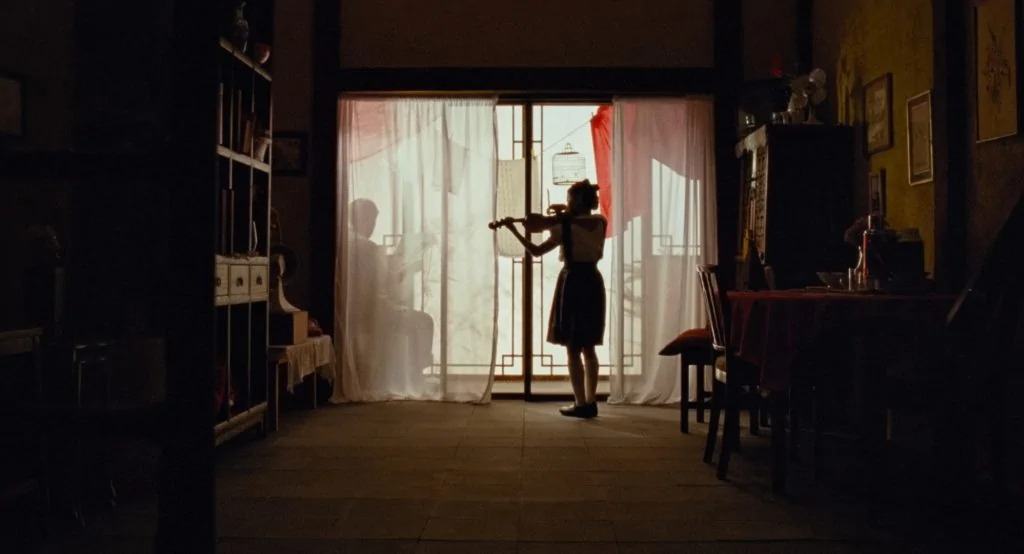
What were your creative references and inspirations? Which films, still photography or paintings were you influenced by?
We were influenced by the use of colour and lighting in Chinese historical drama Farewell My Concubine, as well as the precise camera movements and use of darkness in The Grandmaster. The surrealism of Japanese film Taste of Tea informed our dream sequence, and we also took inspiration from the lake landscapes in the Korean film Spring, Summer, Fall, Winter and Spring.
For the UK scenes, we looked at Carol and Shame. Unfortunately, the only apartment we were able to secure for our shooting dates was an all-white space on the 3rd floor. This naturally presented a challenge for me to light, but I learned a lot from how Sean Bobbitt framed the small white spaces of the protagonist’s apartment in Shame, and the minimalistic setting helped us reveal aspects of our protagonist’s character visually.
What filming locations were used? Were any sets constructed? Did any of the locations present any challenges?
Recreating China within forty miles of Beaconsfield was undoubtedly challenging so we constructed a Chinese apartment in the studio. To evoke the hazy feel of childhood memory, I worked with our production designer Jack Haggerty to choose the right thickness of the traditional Chinese paper window screens which diffused our only source of lighting in the scene. In Post-Production, we also added the characteristic mountains of Guilin city in China as a background extension to the scene that was filmed on a lake in Reading.
Filming in the middle of the lake presented its own set of challenges. The scene involved an older actor on a boat and a child actor jumping into the lake and swimming away from him. We required additional boats to shoot from and transport the actors to the picture boat. We also had a diver on set to ensure everyone’s safety on the water. The logistical challenges of this scene meant that it took a whole day to shoot. I had to meticulously plan our shooting schedule and rotate the actor’s boat to maintain lighting continuity.
In the concert hall location, our budget and COVID rules limited our ability to fill the audience with extras. To maintain the illusion of a full house, we chose shots that gave the focus to our protagonist. Once again, this creative limitation worked in our favour. I think the camera’s subjectivity helped us connect with her emotional experience.
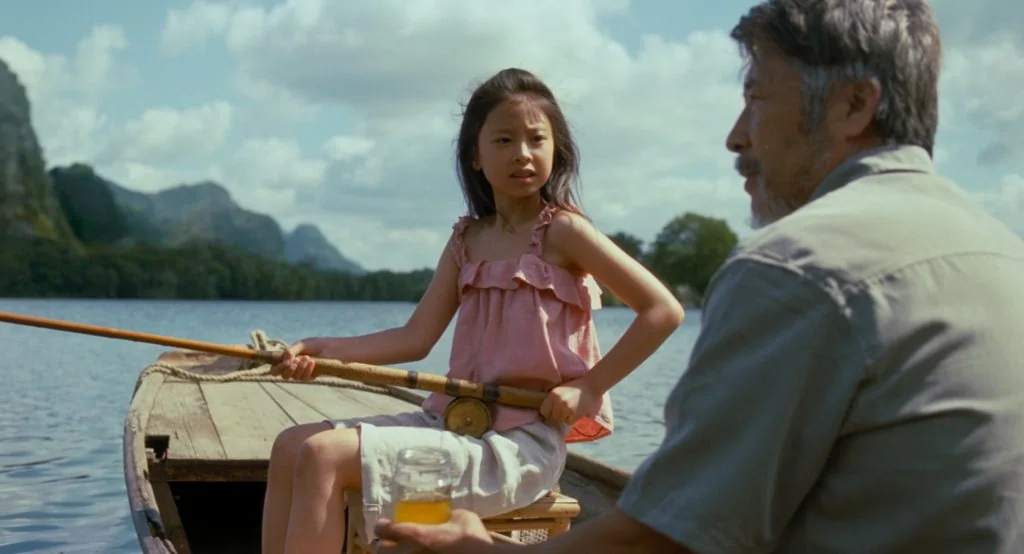
Can you explain your choice of camera and lenses and what made them suitable for this production and the look you were trying to achieve?
Our story revolves around reconnecting to the past and one’s roots. We chose to shoot on 35mm colour film negative as pictures shot on film have a distinctively nostalgic quality, and it just felt the right tool for the overall mood we were trying to evoke.
We shot on an Arricam LT which was ideal for scenes where I was operating handheld. Jade and I both agreed that spherical lenses provided the subtlety that we required for this film. I chose the Cooke S4 mini lenses as I felt that their slight softness and warmth would best compliment the look of film negative. Most of our scenes were interiors, so the film was shot on 500T stock, lit with tungsten light. The one exception was our day exterior scene set on the lake for which I used 50D stock. I have added ½ of Soft FX filter on flashback scenes, for a very subtle glow in the highlights.
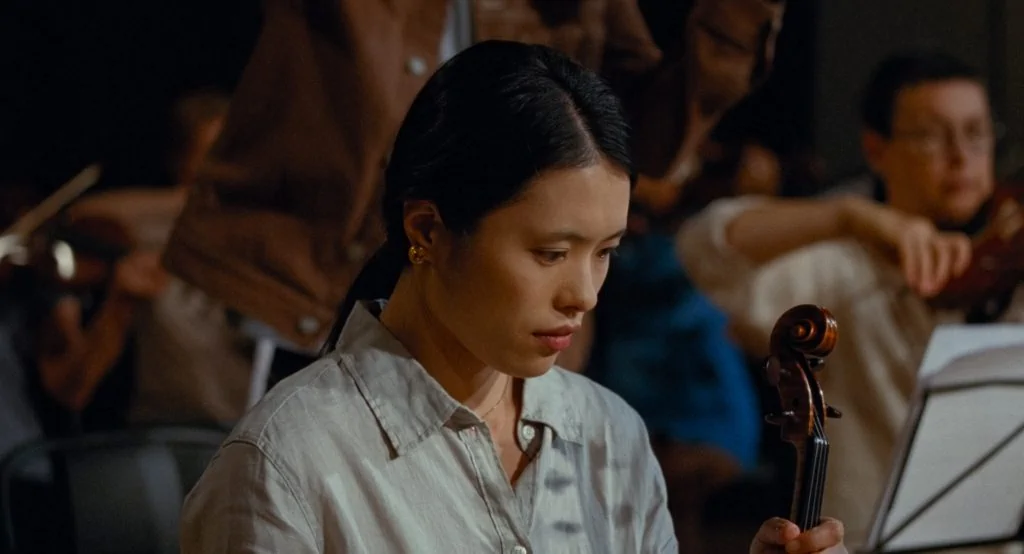
What was your approach to lighting the film? Which was the most difficult scene to light?
Jade wanted all the scenes to feel very grounded, even the flashback and dream sequences. Consequently, I was always striving to create lighting that feels naturalistic, so I only introduced colours through set design and costumes. All the orchestra’s rehearsal spaces were lit with tungsten light and for the dusk interior scenes, we shot with only natural light, supported by Astera tubes lights when it was required.
I was very lucky to work with experienced gaffer Stuart Hurst. We would usually light the entire space, which helped us to move quickly between set-ups. The scene taking place in the concert hall took us the longest to light, as we had to rig enough lights to light the entire stage with the orchestra. Thanks to Stuart’s knowledge, we planned enough time in the schedule for this set-up.
What role did camera movement, composition and framing and colour play in the visual storytelling?
Colour had an important role to play in our visual storytelling. We designed the London scenes to be much colder than those in China, reflecting the emotional austerity of Victoria’s life in the UK. The green of the soup that she eats every day represents the toxic prison that Victoria is creating for herself by repressing her emotions. As the film progresses, we used the colour red to symbolize how Victoria begins to reawaken her passion and reconnect with her past.
Similarly, any camera movements were always motivated by the emotional state of the protagonist. The camera is initially much more static and composed, but as the story progresses, and Victoria loses her emotional self-control, the camera shifts to handheld to mirror the dynamics of her state of mind.
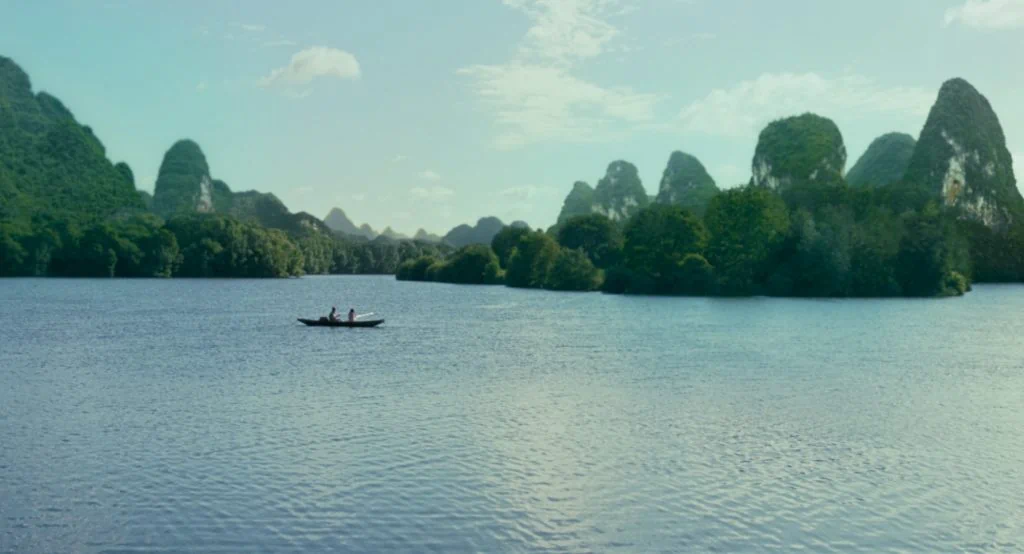
What were you trying to achieve in the grade?
My main focus was preserving the specificity of the colours captured by the film stock and achieving the right hue and saturation for our two most significant colours: red and green. Our colourist Marco Valerio Caminiti has a great eye for creating subtle and cohesive colour palettes so I’m very happy with the final look of the film.
Which elements of the film were most challenging to shoot and how did you overcome those obstacles?
The dream sequence involved turning the entire lake into a thick green soup as our young actress swam through it, which necessitated combining shots from the real lake location, with shots taken on the stage.
To practically shoot our actress fully submerged, we decided to build a pool on the stage which we filled with the green artificial soup. This scene also involved VFX shots with background replacement, and full CGI shots with liquid simulation of the soup merging into the lake water. The sequence was so complicated that I decided to storyboard it. This helped me communicate how we envisioned shooting the sequence to the wider team involved in its execution.
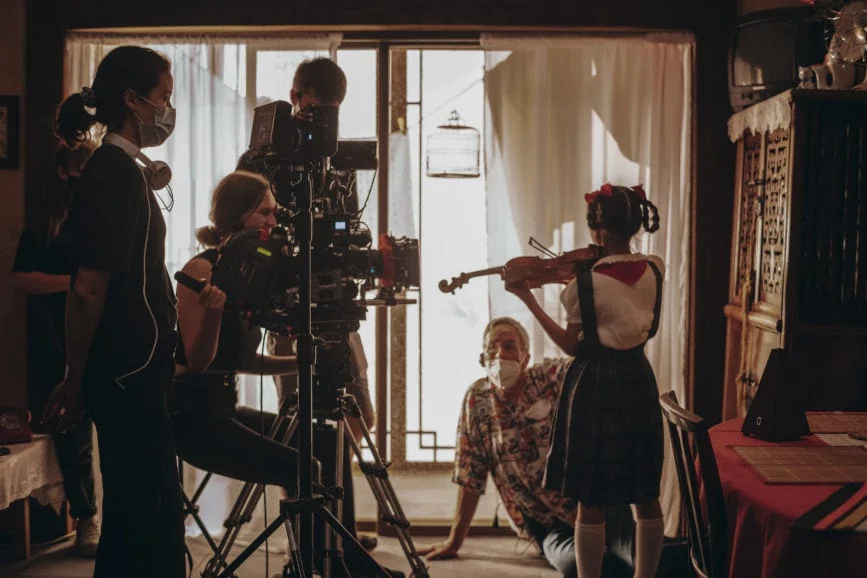
What was your proudest moment throughout the production process or which scene/shot are you most proud of?
It was very important for the story that we cast a real violinist, as her musicianship would be very hard to fake or shoot around. We were extremely lucky to find Sherry Shen – a professional violinist — whose life story closely resembled that of our protagonist. However, casting a non-actor as our lead prompted our tutors to question our decision to shoot on film due to the restricted shooting ratio in our already tight schedule. We knew it was a risk, but we ultimately decided to be bold and accept the challenge.
I’m proud that we trusted our creative instincts and had faith in our abilities. Shooting on 35mm created an elevated atmosphere on set that sharpened the whole crew’s focus and helped everybody emotionally connect with the heightened stakes of Sherry’s first week with her new orchestra. Indeed, my favourite shot in the whole film is Sherry’s mesmerizing and emotive final solo, which we captured in an unbroken, one-and-a-half-minute shot, with a dolly-in from a wide to a close-up on a 75mm lens.
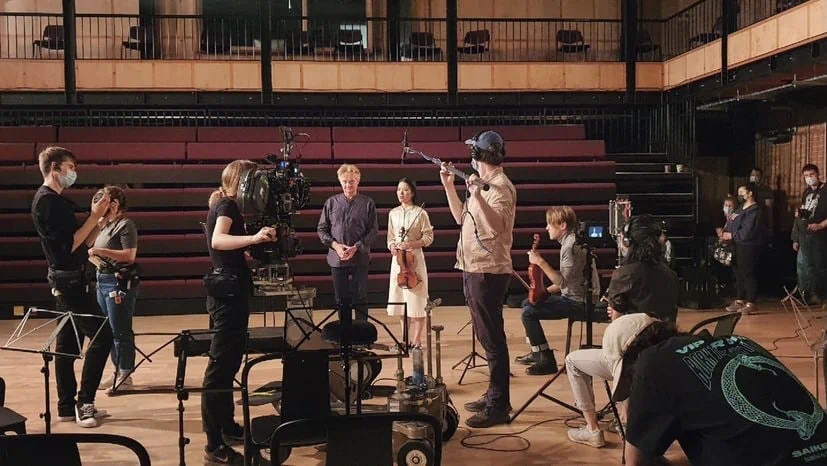
What lessons did you learn from this production you will take with you onto future productions?
It was a great learning experience to be able to shoot longer form on film negative. The constraints imposed by this medium have helped me to become more confident and decisive on set.
However, we would never have been able to make it through as many set-ups as we did without the efficiency and dedication of Wilfred Jevons (Focus Puller), Lou Alvarez (2nd AC) and Lluc Mestre (Loader). I always knew the importance of having a diligent crew, as filmmaking is a collaborative art form, but this project has definitely helped reinforce this belief.






